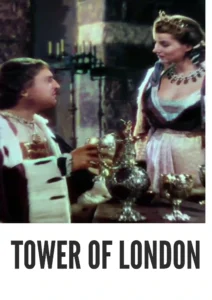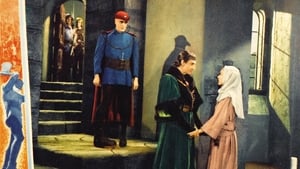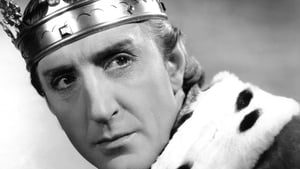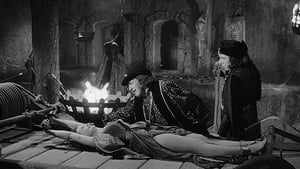Video Sources 0 Views

Download Tower of London (1939) Colorized HD | Basil Rathbone | Horror Mystery Gem
Synopsis
Dark Intrigue at the Tower: Tower of London (1939) in Stunning Color

Delve into the ominous history with Tower of London, a chilling horror mystery from 1939, now beautifully colorized for a uniquely suspenseful experience. Featuring Basil Rathbone and Boris Karloff, this Rowland V. Lee directed film plunges you into the sinister world of Richard III and his treacherous ascent to the throne. Perfect for fans of classic horror and historical intrigue, this HD download brings a shadowy tale of ambition and murder to life. If you enjoyed the dark atmosphere of Son of Frankenstein, this film will keep you on the edge of your seat.
Tower of London Storyline: A Reign of Terror Unfolds
Tower of London recounts the ruthless rise of Richard, Duke of Gloucester (Basil Rathbone), who schemes and murders his way to the English throne, becoming Richard III. Aided by his club-footed executioner, Mord (Boris Karloff), Richard eliminates anyone who stands in his path, including his own family members.The film follows Richard’s relentless pursuit of power, marked by treachery, paranoia, and bloodshed. As he ascends to the throne, his reign is haunted by the ghosts of those he murdered, driving him to increasing madness. A rebellion grows, threatening to overthrow his tyrannical rule. Culminating in the Battle of Bosworth Field, Tower of London is a dark and compelling portrayal of ambition, betrayal, and the price of power.
Movie Cast
The film features a stellar cast, bringing the dark historical drama to life:
- Basil Rathbone as Richard, Duke of Gloucester
- Boris Karloff as Mord
- Barbara O’Neil as Queen Elyzabeth
- Ian Hunter as King Edward IV
- Vincent Price as Duke of Clarence
Movie Genre
Tower of London merges the genres of horror and mystery, creating a chilling atmosphere. With elements of historical drama, the film explores themes of ambition, betrayal, and the supernatural, typical of Universal Horror films of the era.
Historical Context: A Dark Chapter of British History
Released in 1939, Tower of London provides a fictionalized account of the reign of Richard III, one of the most controversial figures in English history. Produced during a period when historical dramas were popular, the film blends historical events with elements of horror and suspense to create a gripping narrative. While not entirely historically accurate, Tower of London captures the dark atmosphere and intrigue surrounding Richard III’s rise to power.
Colorization Details
This colorized version of Tower of London has undergone a meticulous restoration using modern digital techniques, enhancing the visual elements while retaining the film’s original dark and suspenseful atmosphere. The colorization process involved detailed analysis of the original black and white footage, with careful selection of colors to enhance the characters and settings. Using advanced algorithms for color palette selection and image enhancement, this painstaking process brings a new dimension to the story, making it more engaging for modern audiences. This ensures their legacy for future generations.
Technical Details
- Director: Rowland V. Lee
- Screenplay: Robert N. Lee
- Story by: Willis Cooper
- Cinematography: George Robinson
- Edited by: Edward Curtiss
- Production and Distribution Company: Universal Pictures
- Runtime: 92 minutes
Technical Specifications
- Download Format: MP4
- Resolution: HD (1080p)
- Compatibility: Compatible with most devices, including smartphones, tablets, computers, and smart TVs.
Reviews and Critical Reception
Tower of London (1939) is praised for its performances, particularly Basil Rathbone’s portrayal of Richard III and Boris Karloff’s chilling performance as Mord. The film is a notable example of Universal’s horror output, blending historical drama with elements of suspense and the supernatural. For enthusiasts of classic horror and historical dramas, Tower of London offers a thrilling and visually captivating experience.
FAQs
- Q: What is Tower of London about?
- A: Tower of London is a horror mystery about the ruthless rise of Richard III, who murders his way to the English throne.
- Q: Is Tower of London (1939) historically accurate?
- A: While based on historical events, Tower of London takes liberties with the story for dramatic effect.
- Q: Is this version of Tower of London colorized?
- A: Yes, this version has been professionally colorized to enhance the viewing experience.
- Q: What makes Tower of London interesting for horror fans?
- A: Tower of London blends historical drama with elements of suspense and the supernatural, creating a thrilling horror experience.
- Q: What is the download format?
- A: The download format is MP4, which is compatible with most devices.
- Q: What resolution is the download?
- A: The resolution is HD (1080p), providing a high-quality viewing experience.
Download Now in HD!
Watch Tower of London Today!













